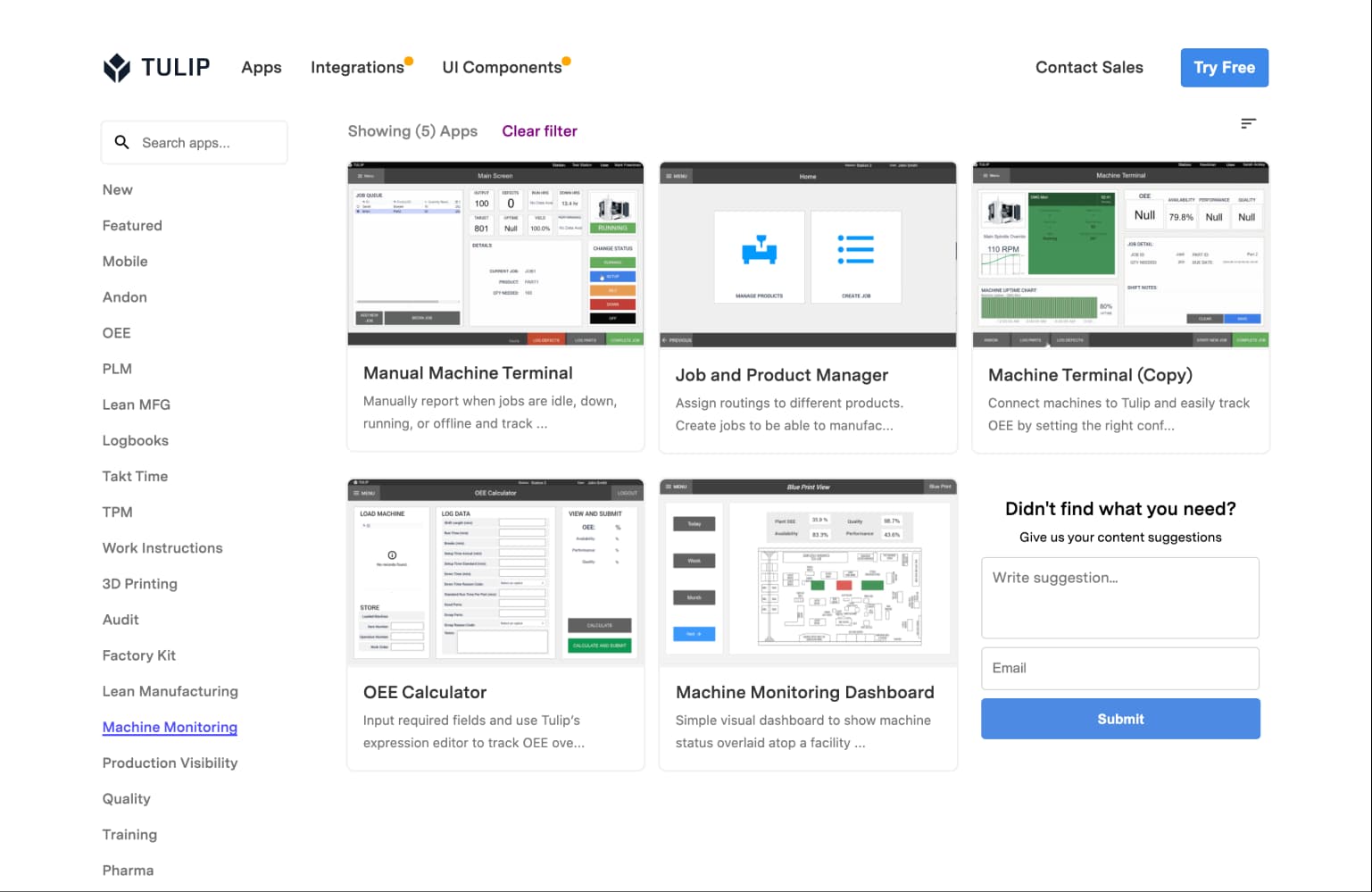App Library Part II: Building the library
TL;DR: In the effort of creating a low-code app store, I used Next.Js, Styled Components, Typescript, AWS, and proprietary APIs to develop the front-end of a unique "App Library for Manufacturing" as part of a collaborative, multi-team project focused on low-code app development. The library provides a centralized repository of applications that can be easily customized and deployed, and my role was crucial in building a user-friendly and responsive front-end interface that incorporates various cutting-edge web development technologies

Introduction
The creation of the Tulip Library V.0 was a significant undertaking, requiring cross-functional collaboration between Marketing, Customer Operations, Engineering, and Design at an unprecedented scale. In just 3 months, the team successfully launched the Tulip App Library in December 2020. I was tasked with both designing the library experience and developing the public-facing website, playing a pivotal role in shaping the final product.
Research & Discovery
The project began with an extensive Research and Discovery phase:
Conducted stakeholder interviews and brainstorming sessions with Marketing and Customer Operations teams.
Gathered user stories and business requirements, focusing on key areas such as SEO strategy, content structure, and user engagement goals.
Identified technical challenges, including the need to restructure the data model and minimize the content input effort for app authors.
These insights guided us to focus on developing a Minimum Viable Product (MVP), balancing feasibility with the ambitious timeline.
Design Process
Once the requirements were established:
Iterated on mockups and live prototypes to gather continuous feedback from stakeholders.
Designed a responsive UI for both mobile and desktop, ensuring an intuitive user experience.
Created not only the Library’s public-facing interface but also contributed to the UI of the apps housed within the library.
Development
With designs finalized, I transitioned to development using:
Next.js, React, TypeScript, Styled Components, and AWS
Focused on SEO optimization, performance, and scalability
Integrated with proprietary APIs for dynamic content management
Worked in agile sprints, ensuring continuous feedback and rapid iteration
This tech stack was chosen to optimize for speed, SEO performance, and ease of continuous deployment.
Launch & Impact
After 3 months of intensive development, the Tulip Library was launched on December 10th, 2020:
Surpassed our objective of achieving an 80%+ SEO score on Google Lighthouse.
Received positive feedback from the Board of Directors and investors, who praised the speed, polish, and added value of the library.
Influenced a revised pricing strategy to reflect the library’s business value.
Achieved 1,000+ daily users, significantly expanding the marketing funnel and driving user engagement.
